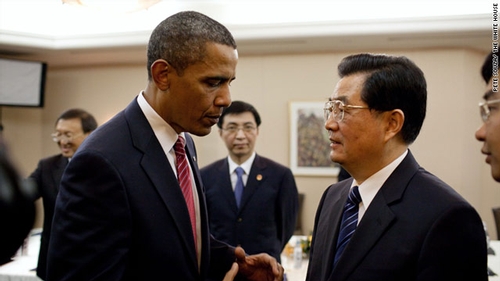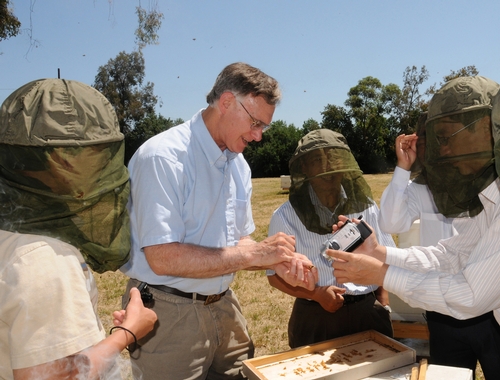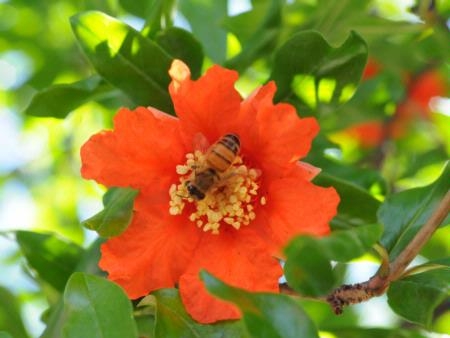From the UC Blogosphere...
China offers California businesses opportunities and risks
The recent U.S. visit by China's president Hu Jintau has California experts considering opportunities for trade with the world's most populous country, according to an article in the Bakersfield Californian.
The story said China's manipulation of its currency is among the most significant barriers to trade between the two countries. China has resisted currency reform, but a CSU Bakersfield economist told reporter Courtenay Edelhart that the country will have to adapt if it wants to realize its superpower aspirations.
Edelhart spoke to UC Davis agricultural economist Colin Carter about agricultural trade with China. He said California farmers grow many of the same products as China, but Americans are stronger in food processing and technology, and have the advantage of a much more efficient industry structure.
"In China, the farmers still don't own the land they work, and the individual farms are pretty small," Carter was quoted. "To really compete on a global scale, the farms are going to have to get a lot bigger and more mechanized."
Interim director of CSU Bakersfield's Small Business Development Center. John Pryor, said local companies interested in the Chinese market should guard their competitive edge carefully.
"Any U.S. firm needs to be very cautious about their intellectual property risks. The Chinese have a long-standing reputation for stealing patented products or processes," Pryor told the reporter.

Chinese president Hu Jintau visited President Obama at the White House last week.
Protecting the Pollinators
Honey bee expert Eric Mussen of UC Davis offers some good advice in a piece that he and commercial beekeeper Gene Brandi of...

Eric Mussen
New ways for using a camera
Back in the day, photography was largely relegated to portraits and vacation memories. But with the advent of digital cameras and camera phones, documenting everyday experiences is commonplace.
UC Cooperative Extension Master Gardener MaryBeth Kampman wrote about modern photography conventions for a column that appeared in the Marin Independent Journal over the weekend.
"People are unabashedly taking pictures everywhere — from restaurants to museums, street corners to elevators. Their pictures are of food, shadows, interesting patterns or juxtaposition of unusual objects. They document items they want to purchase in stores or take pictures of their cars in parking lots so they can find them again," Kampman wrote.
She suggests photography can also be a tool for the ardent gardener.
"Don't restrict yourself to beauty shots," Kampman suggested. "Use your pictures to document your garden experiences. I take at least two photos when taking a picture of a plant that has an identifying label — a beauty shot and a photo of the label. It's easy to forget the exact name of the photographed plant."
Also among her digital gardening ideas:
- Take pictures of watering systems, garden designs, hardscape or color combinations you admire
- Go to the garden supply store and take pictures of plants before you buy them
- Take pictures of plant afflictions and pests to send to a Master Gardener who can help diagnose and remedy the problem

Garden photography is not just for artistry anymore. (Photo: K. Garvey)
Insect-Plant Interactions
As a child, Angela Smilanich never harbored a “fascination or obsession for insects.” That came later. “My love for...

Angela Smilanich
2010 was an excellent year for almonds
California almonds harvested in 2010 are expected to amount to 1.65 billion pounds or more, according to an article by Associated Press reporter Jeff Nachtigal. The story was picked up by many national publications, including the New York Times and the CBS News website.
The sizable almond crop is being met with strong worldwide demand and relatively high prices.
"The nut crops in general are looking good in California," UC farm advisor emeritus John Edstrom was quoted in the story.
UC Davis Cooperative Extension almond specialist Bruce Lampinen told the reporter that improved agricultural techniques used by California's 6,000 almond growers - such as planting trees closer together, cutting back on pruning and knocking off "mummies" during the winter to control navel orangeworm - have helped boost production.
But, the almond industry is not without its challenges.
- UC Davis entomologist Eric Mussen told the reporter that farmers are still concerned about major honeybee die-offs, which have doubled the cost of renting bees for pollination in the past five years.
- Water shortages are also a concern for some producers, according to Almond Board chair Mike Mason.
California almond growers produce 100 percent of the U.S. crop, supplying 100 percent of the domestic market, and 80 percent of the world market, said an Western Farm Press article about the bumper almond crop.

Improved almond production techniques have helped grow the industry.







